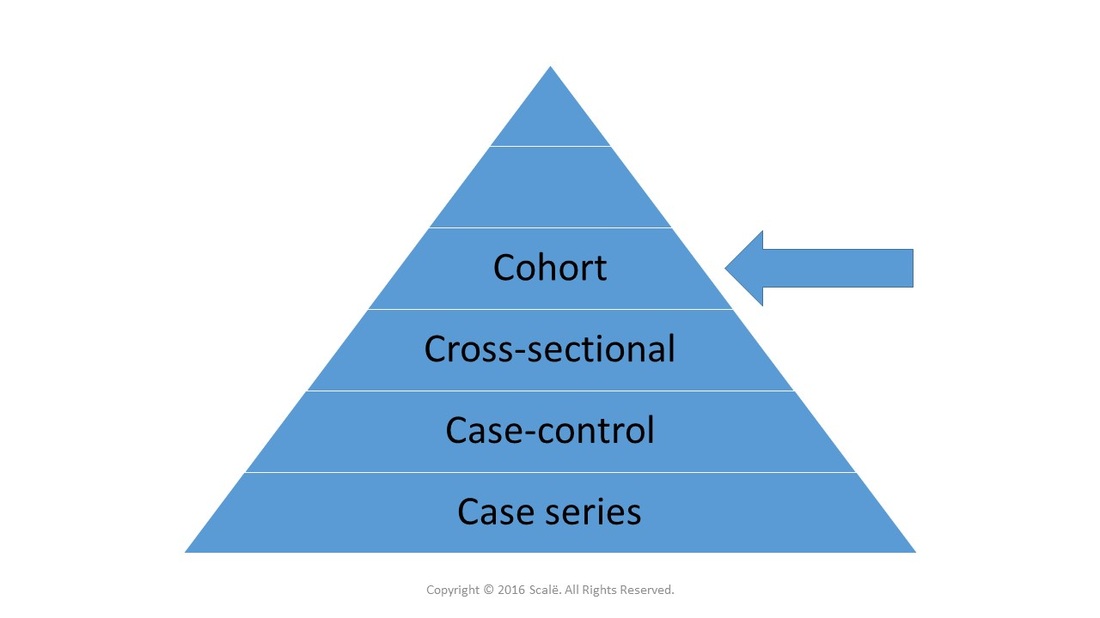Retrospective cohort
Retrospective cohort designs establish odds associated with exposure and longitudinal effects
Retrospective cohort is the strongest retrospective observational design in terms of evidence generated. The retrospective cohort design allows researchers to calculate odds ratios and prevalence. Retrospective cohorts are also easier to apply in real-world settings. Selection bias is introduced into this study design by creating a cohort of patients without randomization. Observation biases are found in the form of relying on previous research data and the inherent error associated with measuring for pertinent predictor, confounding, and outcome variables retrospectively.
Retrospective cohort designs are great for busy clinicians and scientists
The retrospective cohort design is a "go-to" design for busy applied clinicians and scientists. Retrospective cohort designs generate evidence that provide the empirical basis for proposing future prospective and randomized studies to further establish a promising treatment effect. Retrospective cohort designs generate the highest level of observational evidence but cannot infer any causal associations.
To conduct a retrospective cohort, the researcher creates a cohort of participants that are similar in terms of demographic, prognostic, and clinical characteristics. Members of the cohort are put into independent groups based upon exposure to some sort of intervention, treatment, test, or agent.
Researchers then follow the exposed and non-exposed groups forward to establish the risk of developing a disease state or outcome.
To conduct a retrospective cohort, the researcher creates a cohort of participants that are similar in terms of demographic, prognostic, and clinical characteristics. Members of the cohort are put into independent groups based upon exposure to some sort of intervention, treatment, test, or agent.
Researchers then follow the exposed and non-exposed groups forward to establish the risk of developing a disease state or outcome.
Odds ratio and prevalence in retrospective cohort designs
Retrospective cohort designs provide measures of odds ratios and prevalence. These two measures are the highest level of evidence that can yielded from retrospective observational designs.
Click on the Statistical Power button to continue.
Statistician For Hire
DO YOU NEED TO HIRE A STATISTICIAN?
Eric Heidel, Ph.D. will provide statistical consulting for your research study at $100/hour. Secure checkout is available with PayPal, Stripe, Venmo, and Zelle.
- Statistical Analysis
- Sample Size Calculations
- Diagnostic Testing and Epidemiological Calculations
- Psychometrics


